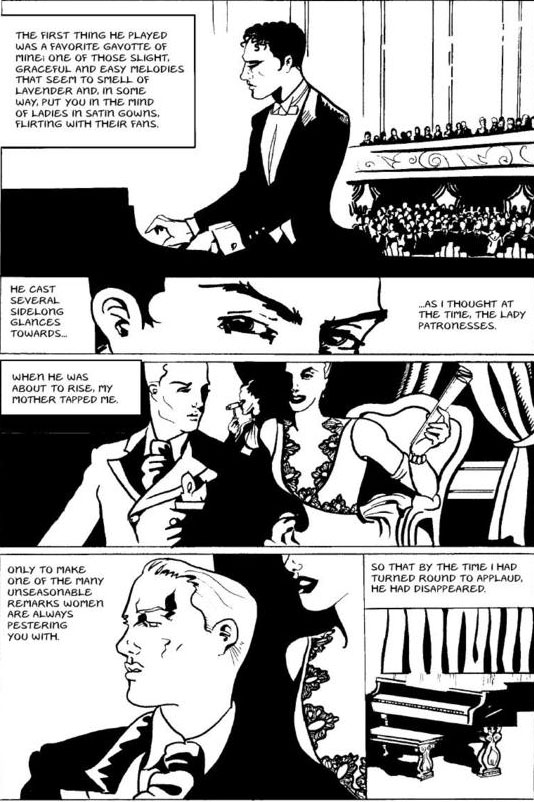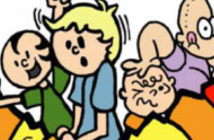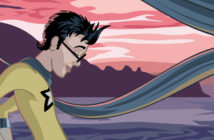It’s an evident mystery who wrote Teleny, or, The Reverse of the Medal, a pornographic novel from the Nineteenth Century. It’s said to be one of the first works of literature in the English language to depict almost exclusively homosexual content—if not the seminal work in the very narrow subgenre. So, who better to attribute credit to other than Oscar Wilde? No, it hasn’t been definitively proven that Wilde was responsible for the novel, but I doubt stalwart opposition will be found among the dusty scholars of old British prose.
But upon further consideration, few familiar with Teleny and its creation believe that Wilde was its only author. Strong suspicion looms that the book is an anthology of sorts, a collection of contributions from London’s bohemian and sexually liberated artists and writers. This important detail is noted by Charles Hirsch, a French bookseller who worked in Victorian London and had a taste for sex and pornography in literature (be still, my beating heart). A saucy urban legend blossomed from Hirsch’s account of Wilde’s patronage of his shop: the writer asked Hirsch to keep secret an unfinished manuscript that would be picked up by a friend. Hirsch was to give Wilde’s friend the manuscript and then accept it back once he was finished with it. And then another would visit the shop and ask for it. And another. And then one final time.
To be fair, that brief history is a bit inaccurate. There’s one more contributing author, and his work on the story is by far the most appealing: cartoonist Jon Macy. Though, Macy didn’t really add to Teleny as much as he redefined it, taking a historic piece of seedy literature and revisualizing it in a fashion that would titillate even the brilliantly foppish Wilde.
Macy’s conceptualization is Teleny and Camille, available from Northwest Press. The graphic novel tells the story of the prodigy Hungarian pianist, Teleny, who is adored by all—not just for his instrumental skill, but for his tousled brown hair and his enticing face. No one can resist him, and that includes the young aristocrat, Camille, who is spellbound the moment he lays eyes on him.
An erotic chase ensues from that point on between Teleny and Camille. Camille, who lives shut away in a London mansion with his deceptively femme-fatale mother, pines for Teleny day and night, but how could such a bright and young talent be interested in him? It matters not, because he is and the two young men fall in lustful love with one another. To try and encapsulate the plot further would trivialize and damage the sheer beauty of what Macy has achieved (under the spiritual tutelage of Wilde and his comrades, of course).
Macy’s Teleny and Camille is book-ended by a prologue and epilogue in real-time: we see the cartoonist working on the book with a buddy of his in a coffee shop, trying to figure out how exactly to take an already existing novel and adapt it into a graphic one. As Hollywood has proven to us, adaptations are often disastrous. Macy originally wanted to preserve every word and add art to enhance it, but it didn’t work. So, what I gather from these narrative asides is that Macy picked what portions to include as prose on the page and what to convert into pure imagery.
I have no idea how daunting this must have been—and daunting I’m sure it was—but it was worth all the effort, because Macy’s finished product is nothing short of breathtaking. To tersely describe this book: Teleny and Camille is lovingly elegant. Because Macy is primarily an illustrator (to the best of my knowledge), his apparent contribution is his artwork. Some images look like rough drawings found in a sketchpad, while others are finely tuned scenes worthy of display as murals.
What isn’t so apparent is just how successful Macy was in deciding what prose to present on the page and what to retrofit as artwork. A typical failing I see in independent comics is overwriting. And yet, here an artist is able to take a Victorian novel and properly proportion its material into words and art alike. No page has too many words, and every passage included naturally flows with its accompanying imagery.
Admittedly, I’ve never read the original Teleny novel, though I’ve heard of it in brief passing during my happier days of smoking cigarettes and talking about literature, sex, and alcohol behind the English department’s building in college. To be honest, I do sometimes have a difficult go of reading old-world literature; at times, it’s too baroque and too flowery for my tolerance. Needless to say, I tend to appreciate contemporary literature more than its ancestral roots. And I’m sure I will never read Teleny, but now I don’t feel like I have to.
What a great boon Jon Macy has given us in Teleny and Camille.
This comic book review was originally published on Broken Frontier on 22 February 2011.




